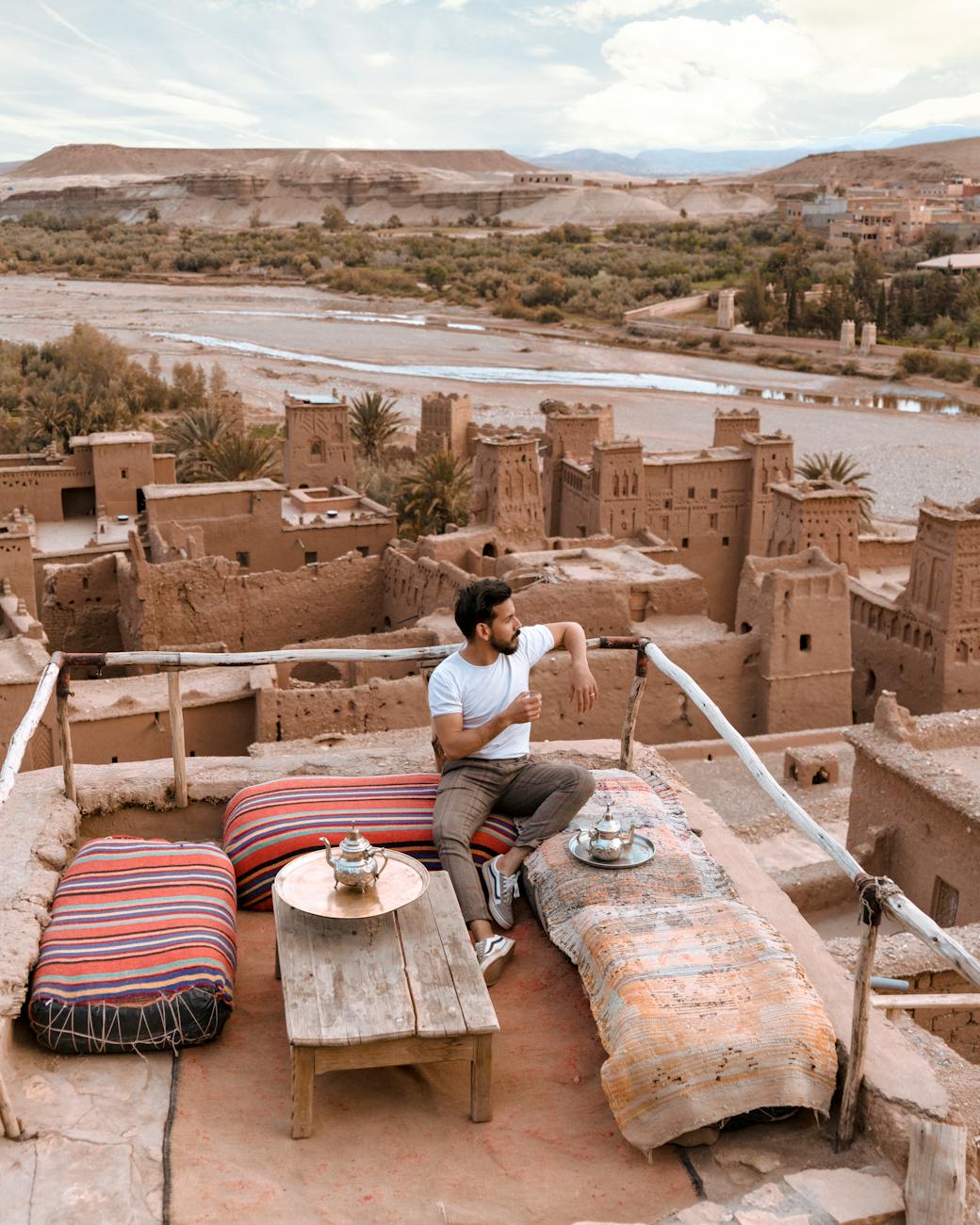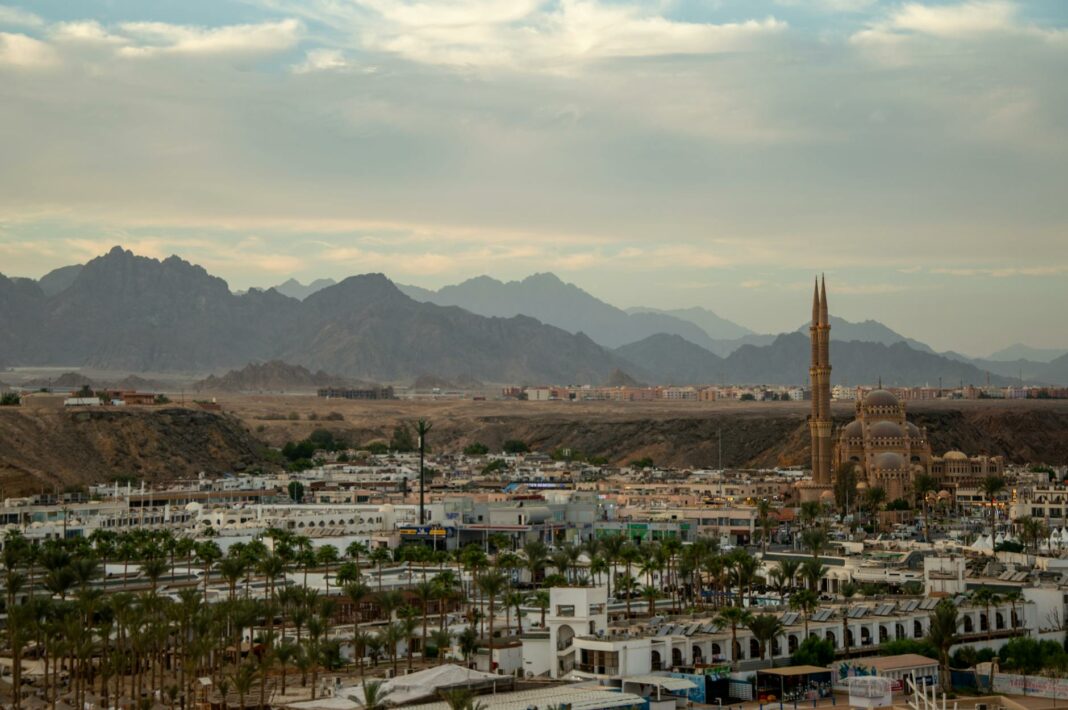**Table of Contents**
**1. The Great Pyramids of Giza**
**2. Petra: The Rose-Red City**
**3. Ancient City of Palmyra**
**4. Chichen Itza: A Step Back in Time**
**5. Tikal: The Jewel of the Jungle**
**6. Taos Pueblo: A Living History**
**7. Incredible Inca Ruins of Machu Picchu**
**8. Mesopotamia: The Cradle of Civilization**
**9. Conclusion: A Journey Through Time**
**10. FAQ**
Get ready to embark on an exhilarating adventure through some of the most awe-inspiring historical desert sites across the globe. From ancient civilizations to architectural marvels, these destinations are steeped in rich history, waiting to be explored. With vibrant cultures and breathtaking landscapes, prepare for a journey that will enchant your senses and challenge your imagination. Dive right in, as we unveil the desert locations that will leave you utterly speechless.
These remarkable sites not only showcase the ingenuity of ancient peoples but also invite us to ponder the stories hidden within their stones. Each destination boasts unique tales and unparalleled beauty, ensuring that travelers are not merely observers but active participants in the history that surrounds them. Whether you are captivated by monumental architecture or the allure of ancient myths, there is an awe-inspiring site waiting just for you.
**1. The Great Pyramids of Giza**
Few monuments can evoke as much wonder as the Great Pyramids of Giza. Standing proudly against the backdrop of the desert, these monumental structures are a testament to human ingenuity and ambition. Constructed over 4,500 years ago, the pyramids were built as elaborate tombs for pharaohs, designed to ensure their safe passage into the afterlife. The precision with which they were constructed is nothing short of miraculous, showcasing the advanced engineering skills of the time.
Visitors often find themselves captivated by the sheer scale of the pyramids. The Great Pyramid of Khufu, the largest of the trio, originally stood at 146.6 meters tall—making it the tallest man-made structure for over 3,800 years. Walking around, one can’t help but feel a profound connection to the past, imagining the labor and artistry that went into constructing these iconic tombs. As the sun sets over the horizon, casting golden hues on the stone, the pyramids transform into a breathtaking silhouette, enhancing their mystique and allure.
**2. Petra: The Rose-Red City**
Nestled within the rugged cliffs of southern Jordan, Petra is more than just an archaeological wonder; it is a breathtaking masterpiece carved directly into the rose-colored sandstone. This ancient city served as a vital trading hub for centuries and is recognized as one of the New Seven Wonders of the World. As you wander through the narrow gorge known as the Siq, the excitement builds, ultimately revealing the iconic Treasury, its façade shimmering in the warm desert sun.
Exploring Petra feels like stepping back in time, as ancient tombs, temples, and winding pathways transport you to an era long past. What makes this site particularly special is how it seamlessly blends history with stunning natural beauty. The dramatic cliffs and intricate rock-cut structures inspire awe, making it impossible not to feel the ghosts of those who once thrived here. As you navigate this enchanting site, you might even catch a glimpse of the local Bedouin culture, which remains intertwined with Petra’s legacy.
**3. Ancient City of Palmyra**
Once a thriving cosmopolitan city at the crossroads of trade routes, Palmyra is an archaeological marvel that boasts a rich tapestry of history and culture. This UNESCO World Heritage site, located in the Syrian desert, is adorned with monumental temples and colonnaded streets. The stunning ruins evoke a sense of grandeur, reminding us of its past prominence as a center for trade, wealth, and cultural exchange.
What truly sets Palmyra apart is the unique blend of Greco-Roman influence and Eastern traditions. Stand in the heart of the ruins, and you can feel the echoes of a bustling marketplace that once thrived with activity. Tourists can lose themselves among the remains of temples dedicated to ancient deities, their architectural beauty sparking the imagination. Photographers and history enthusiasts alike will find endless inspiration among these remarkable ancient stones that whisper tales of a glorious past.
**4. Chichen Itza: A Step Back in Time**
Chichen Itza, the most famous archaeological site of the Maya civilization, is a treasure trove of historical significance nestled in the heart of Mexico’s Yucatan Peninsula. Dominated by the imposing El Castillo pyramid, this site played a pivotal role in Mayan culture, serving as a ceremonial hub. The intricate carvings and architectural sophistication reflect the advanced understanding of astronomy, mathematics, and architecture that the Maya possessed.
As you traverse the grounds, the interplay of shadows and light creates an almost mystical atmosphere around each landmark, especially during the spring and autumn equinoxes when the sun casts serpent-like shadows down the pyramid. The acoustics of the Great Ball Court demonstrate the Mayans’ mastery of sound, further enchanting visitors who can hear the echoes of ancient games reverberating through time. Chichen Itza not only reveals the splendor of a civilization but also imparts a sense of awe and respect for the achievements of human innovation.
**5. Tikal: The Jewel of the Jungle**
Deep within the lush jungles of Guatemala lies Tikal, a magnificent city of towering pyramids and sprawling plazas, hidden beneath the verdant canopy. Once the heart of the Maya civilization, Tikal flourished between 200 and 900 AD. Today, it stands as one of the largest archaeological sites in Central America, revealing the extent of Mayan influence over centuries.
Wandering through Tikal, the towering temples rise dramatically amidst surrounding flora, offering breathtaking views of the jungle canopy. The sounds of howler monkeys and colorful toucans fill the air, adding to the atmosphere of exploration and discovery. The Temple of the Great Jaguar, soaring 47 meters above the plaza, serves as a striking reminder of the city’s past grandeur. Each structure tells a story of power, religion, and the intertwined lives of those who called this remarkable place home.
**6. Taos Pueblo: A Living History**
Nestled in the high desert of New Mexico, Taos Pueblo stands out as one of the oldest continuously inhabited communities in the United States. This UNESCO World Heritage site is a stunning example of adobe construction and traditional Native American culture. The pueblo’s multi-storied buildings are made from earth and straw, harmoniously blending with the surrounding landscape, showcasing the ingenuity of its inhabitants.
What makes Taos Pueblo truly special is the vibrant culture that continues to thrive there. The Pueblo Native Americans invite visitors to learn about their traditions, history, and arts, providing an authentic glimpse into their way of life. As you stroll through the village, the colorful pottery, intricate weaving, and local storytelling help to weave a deeper connection to the land and its people. It’s an extraordinary experience where past and present coexist beautifully.
**7. Incredible Inca Ruins of Machu Picchu**
Machu Picchu, the crown jewel of Inca architecture, is perhaps the most celebrated archaeological site in South America. Perched high in the Andes Mountains of Peru, this ancient city was once a royal estate and religious pilgrimage site. The breathtaking views alone make it a must-visit, but the ingenuity of the construction is what truly captivates wanderers from around the globe.
The Incas’ mastery of stonework is displayed in every meticulously crafted wall and agricultural terrace. Ascending the Inca Trail, travelers encounter not just the ruins of the city but also panoramic vistas that stretch out over misty mountains and lush valleys. The tranquility of the site, combined with the rich history of the Inca civilization, engulfs visitors, leaving them awestruck amidst the ruins. Here, you feel the spirit of a people whose legacy continues to resonate through time.
**8. Mesopotamia: The Cradle of Civilization**
Traveling to Mesopotamia, often referred to as the cradle of civilization, transports you to the heart of ancient history. It stretches across modern-day Iraq and is rich in archaeological treasures. From the splendid ziggurats of Ur to the impressive wall reliefs of Nineveh, this region sparked some of humanity’s earliest urban developments, writing systems, and legal codes.
Visiting these ancient cities feels like peeling back layers of time itself. The awe-inspiring architecture showcases the ingenuity of ancient cultures, while the cuneiform inscriptions reveal the sophistication of early writing. This historical landscape is both humbling and exhilarating, offering a vivid connection to humanity’s past endeavors and triumphs that laid the foundation for our modern world.
**9. Conclusion: Uncovering the Wonders of Desert History**
In your quest to explore these incredible desert historical sites, each location offers a unique glimpse into the will, creativity, and resilience of ancient civilizations. Every journey becomes an invitation to ponder the connections between past and present. While standing in awe of these magnificent structures, it becomes clear that the stories they tell are woven into the very fabric of human history.
Travel helps us rediscover who we are and challenges us to appreciate the artistry and achievements of those who came before us. This exploration will undoubtedly leave you speechless and inspire a newfound understanding of our global heritage. So, pack your bags and set forth on an adventure that promises deep introspection and relentless wonder.
**10. FAQ**
**What is the best time to visit desert historical sites?**
Visiting during the cooler months, such as fall and spring, is generally recommended. This avoids the extreme heat of summer and allows for a more comfortable exploration experience.
**Are these sites accessible for all types of travelers?**
While many sites strive to accommodate various needs, accessibility can vary. It’s always good to check specific information about the sites you plan to visit.
**Is it possible to explore these sites without a guide?**
Some places allow independent exploration, but guided tours often provide invaluable insights and enhance the overall experience by sharing expert knowledge on the history and significance of the ruins.
**Can I photography at these historical sites?**
Most sites allow photography, but it’s essential to check specific rules or restrictions in place, especially at culturally sensitive locations or during ceremonies.
**Are there any local customs I should be aware of?**
Yes, every culture has unique traditions. Being respectful of local customs, dress codes, and norms will enhance your visit and foster goodwill with the local populations you encounter.
Image Credit: Pexels





